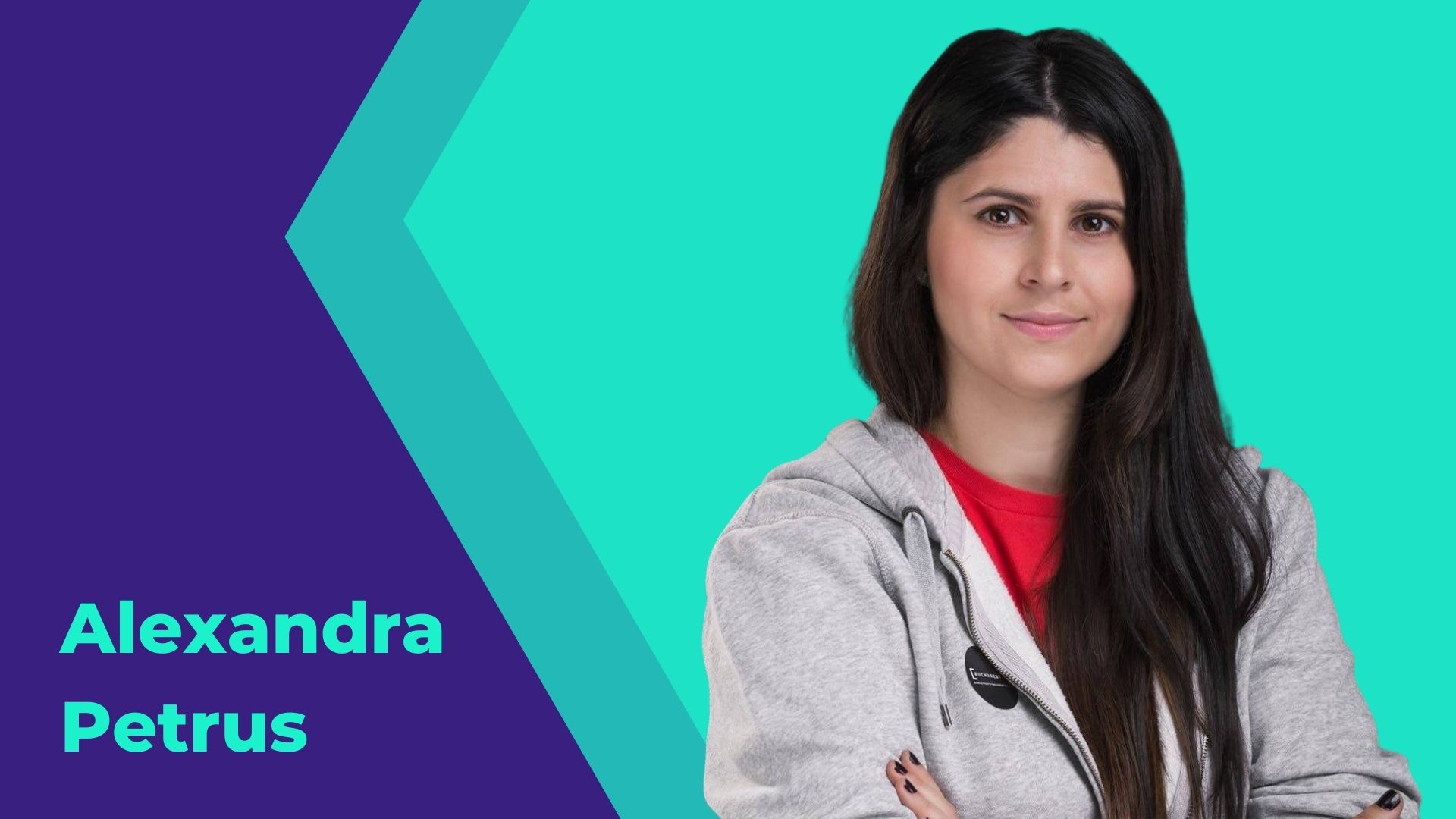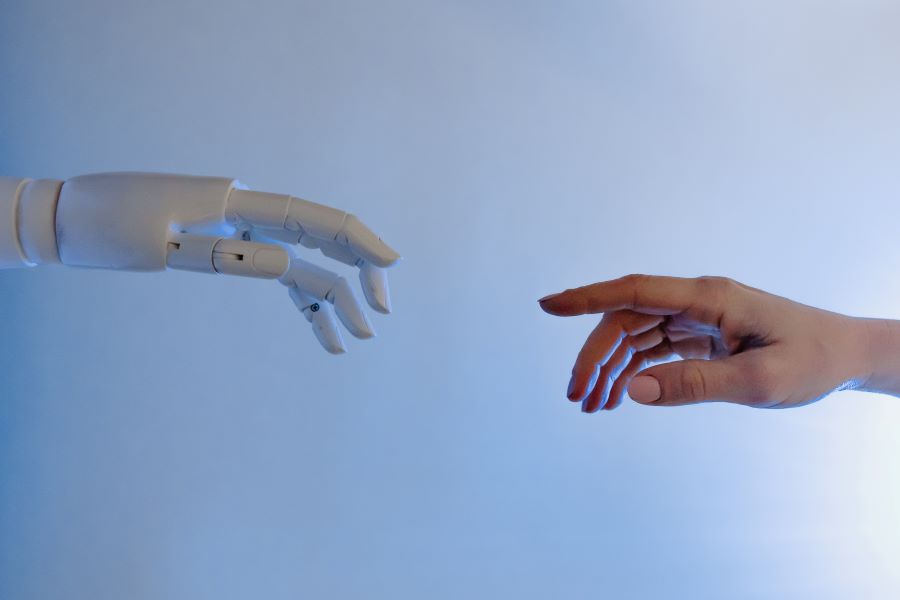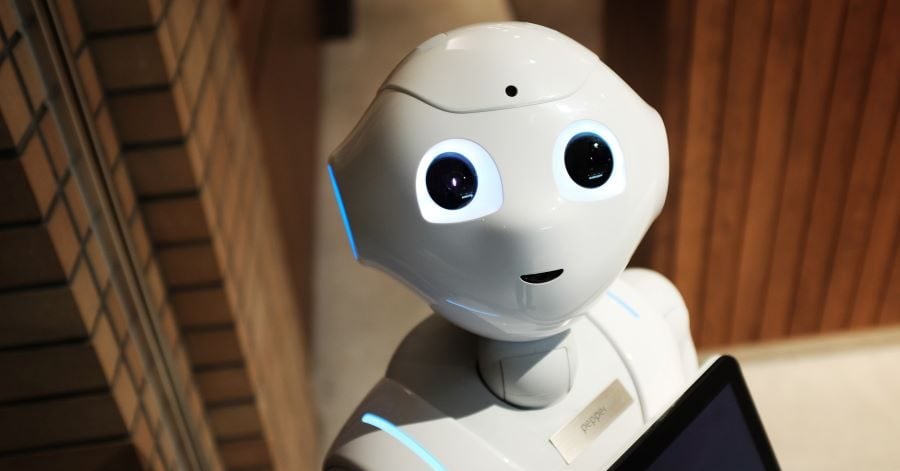From self-driving automobiles to life-saving medical gear, from website crawlers to digital assistants, AI is building the code of the future. Yet, even if Romania has birthed leading innovators that have reached global success and showed the potential of this technology, like UiPath and FintechOS amongst other AI startups, less than 25% of companies are ready to adopt these solutions, and only 6% of enterprises use them, lower than the EU average of 7%.
AI adoption has the potential of adding €2.7T to output by 2030 in Europe. The American inventor and futurist, Ray Kurzweil, suggested the Turing test, titled “the imitation game” by English scientist Alan Turing in 1950, where machines can think at a human level, will be passed by bots sometimes until 2030. But humans will also keep evolving aided by AI.
“Even if we are reluctant to change, it is the only thing that we can be certain about and we need to be prepared,” says Anca Goron, the Cluj-based founder of doorie, an AI-based hotel management platform, and member of ASAIA (Association for Science and Application of AI).

The Recursive dives deeper into the markets that are changing due to AI, the supporting ecosystem in Romania, communities which are trying to raise awareness of the advantages of tapping into this technology, while looking at the barriers and solutions to local AI adoption.
Which markets are ahead of the game
AI solutions aim to change how people work and live by automating tasks so humans can focus on other things. While some still believe that by endorsing bots, they will release the reins of their jobs, others are driving innovation in areas like health or enterprise. Take for example .lumen, a Cluj-based startup working on a pair of glasses that will empower the blind, and DRUID, the Bucharest-based chatbot looking to increase productivity in the workplace.
Alexandra Petrus, the co-founder of the Bucharest AI community, shared with The Recursive that she has seen AI taking industries like transportation and manufacturing by storm. While Anca Goron believes that AI can make a difference when it comes to a customer’s personalized experience in areas like tourism.
Petrus saysAI adoption in Romania is the strongest in markets that are experimental and tech-driven, like communications and gaming, and where predictions and automation have an impact on business metrics. Goron adds that AI can help improve diagnostics procedures and general wellness, making general medical care personalized, transparent, and accessible.
“Around 500K jobs disappeared, but 800K more were created. Computer vision and machine learning turned these worlds around,” Petrus shares.

The AI ecosystem in Romania
Last fall, Bucharest was selected to host the European Cybersecurity Industrial, Technology and Research Competence Center. As the EU Cyber Centre, it will aid in achieving the EU’s digital objectives.
Anca Goron believes this will position the country as a major contributor to the international ecosystem. She says that Romania is on the right track, with the government following the directives of the EU regarding AI as the main adoption growth driver, followed by educating and training people. She added that people’s potential in the IT&C field is the essential key.
According to Petrus, the AI growth drivers in Romania are companies executing with a global perspective and the latest technologies. Access to open markets makes technology developers enrich their horizons, while NGOs or communities drive awareness.
“We launched the BeAI – Europe’s AI Preaccelerator, aimed at early-stage deep tech startups, which is open until October 6th, because we must help early-stage AI startups grow from technology readiness level 3 to TRL5, aka getting their technology from a lab to some traction. Most of the AI programs or funding out there are looking for a TRL5/traction stage,” Petrus shared.
To support the ecosystem, local law firms have delved into AI, Machine Learning and Big Data Laws and Regulations to try and simplify the adoption. While ARIA Romania (Romanian Association for Artificial Intelligence) and AIRomania (Artificial Intelligence in Romania) are two communities bringing together both academia and business players that can move the growth forward. AI Romania proposes some initiatives for future development. Amongst them are training programs for developers and bringing AI technology to the agricultural sector.

AI barriers in the country
“A major limitation in the wide adoption of AI technology in the business field comes from the financial shortcomings, more precisely from the lack of financial resources, to which we can add the lack of experienced personnel and a general reluctance towards the new and the unknown,” Goron shared.
Petrus believes it all starts with the mindset, as there is still more work to be done in markets where human behavior has to be mimicked to create trust.
She summarizes it with “think big, start small, fail fast”. People still prefer to opt for the old methods and it all starts with Universities, which aren’t being funded to the level of the US or China. But she believes in the leapfrogging concept. The idea is that underdeveloped areas will adopt new technologies faster without an intermediary phase.
To close this gap between producing and using, the European Commission aims to invest over €20B in the next decade to help the continent become a global AI leader. With the new plan, representatives want to regulate AI to make it secure and ensure that it will be a force for good in society.
To ease the adoption of AI, it has released a legal framework, called the Artificial Intelligence Act. This defined AI as software developed with machine learning approaches, deep learning; logic and knowledge-based approaches, including inductive programming; and statistical approaches, including search and optimization methods.
It has also been proposed for AI solutions to be labeled as:
- Minimal risk – the draft regulation does not intervene here, as these AI systems are considered minimal or no risk for citizens’ rights or safety; e.g.: AI-enabled video games or spam filters;
- Limited Risk – AI systems with specific transparency obligations: e.g. chatbots, where users should be aware that they are interacting with a machine;
- High risk – subject to strict obligations before they can be put on the market: e.g. scoring of exams or credit scoring denying citizens the opportunity to obtain a loan;
- Unacceptable risk – AI systems considered a clear threat to the safety, livelihoods, and rights of people will be prohibited, e.g. social scoring by governments or apps that manipulate human behavior.
The AIA obligations apply to the parties offering the solutions, be it developers or third-party providers. From users, it mandates to use the solution as it was intended, to monitor its performance with logging and audit requirements, to put in place a risk management system that will ensure the AI system is documented and mitigated, and when it comes to B2C solutions to apply transparency duties, like GDPR.
What is next for AI in Romania?
For SMEs to be able to adopt these practices, Goron recommends data and product audits with an AI expert. Consultants will ensure companies adopt the best AI solution fitted for their values, vision, and mission.
Alexandra Petrus believes that AI has to be normalized to be understood. She shared that the five enablers in easing this adoption are:
- governments proposing AI regulation
- tech developers providing access to AI tools,
- companies focusing on upskilling and reskilling,
- academia focusing on multi-disciplinary,
- and NGOs or communities to create partnerships and show the benefits of using AI.
Academia and the government should be responsible for exposing working datasets, but so should companies and communities. If we can make all the five enablers align, we are in for something good in the next decade,” said Petrus, exemplifying Pwc and Microsoft’s paper ‘How AI can enable a Sustainable Future’.
The paper concludes that if tech startups are coming up with solutions, the government has to come up with the regulations and resources, so special communities can aid the workforce to better understand the technology to be able to learn and evolve. This is the AI adoption cycle.
Taking all of these into account, is AI adoption slow because of high cost, or people not having the necessary knowledge to work with it? All of the above? At The Recursive, we value your opinion and would love to hear from you in the comments section below. What do you think should be the first steps to ensure AI adoption in the region?







